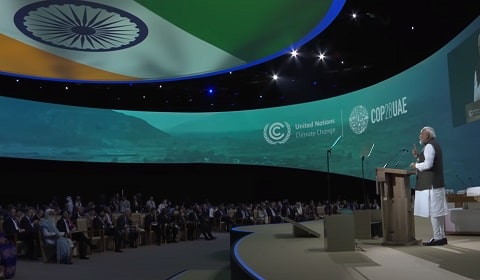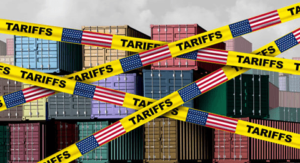
India's Crucial Role in Global Climate Action
India’s crucial role in global climate action has come sharply into focus following the 2023 United Nations Climate Change Conference in Dubai. The call for the phase-out of fossil fuels and the pursuit of carbon reduction goals outlined in the 2015 Paris climate agreement hinge significantly on India’s actions as the world’s third-largest greenhouse-gas emitter.
About 7.6% of global emissions in 2022, India has set ambitious renewable-energy targets and played a leading role in international climate talks. However, the nation faces political challenges, particularly in reforming electricity pricing, a critical factor in achieving emissions-reduction goals.
As India grapples with its unique energy landscape, innovative solutions within political constraints and international financial support become pivotal in steering the nation toward a sustainable, low-carbon future.
Table of Contents
India’s Crucial Role in Global Climate Action
The 2023 United Nations Climate Change Conference (COP28) in Dubai concluded with global optimism for meeting 2015 Paris Agreement targets. Despite progress, attention turns to India, the world’s third-largest emitter, contributing 7.6% to total emissions in 2022.
India’s crucial role in global climate action comes to the forefront, as the nation, with ambitious renewable energy goals, grapples with political challenges hindering its climate target achievement. In 2023, India pledged to achieve 50% of its total energy capacity from renewables by 2030, yet it faces hurdles like reliance on coal for 70% of electricity generation.
The nation’s commitment to afforestation and expanding solar capacity is countered by socio-economic factors and energy security concerns. The international community watches closely, recognizing India’s pivotal role in global climate efforts.
1. India’s Greenhouse Gas Emissions and Renewable Energy Commitments
In 2022, India’s 7.6% share of global greenhouse gas emissions positioned it as the third-largest emitter after China (30.7%) and the United States (13.6%). India’s crucial role in global climate action is evident as the country grapples with a significant environmental footprint, yet it has committed to ambitious renewable energy goals and climate-friendly investment.
The country aims to achieve 40% of its total energy capacity from renewables by 2030. However, political complexities pose challenges to this transition, as the fossil fuel industry retains influence. Despite these obstacles, India actively participates in international climate discussions and has made strides in renewable energy capacity, with a notable 38 GW installed as of 2022. Balancing economic growth and environmental sustainability remains a key challenge for India in its pursuit of a greener future.
2. Countercyclical Taxing of Petroleum Products
India’s countercyclical taxation of petroleum products involves adjusting taxes based on global price shifts. This approach, intended to stabilize consumer prices, leads to a modest effective carbon price of €14 per ton in 2021, notably lower than European benchmarks. India’s crucial role in global climate action is evident in its fiscal strategies as well.
This fiscal strategy, however, poses a challenge in reconciling economic policies with environmental objectives. In 2021, India’s annual petroleum consumption was approximately 215 million metric tons, with petroleum contributing over 35% to the country’s total energy consumption.
The government’s tax adjustments respond to fluctuations in global crude oil prices, demonstrating a nuanced economic approach. Yet, the lower effective carbon price underscores the need for India to strike a balance between economic stability and environmental sustainability in its energy policies.
3. Electricity Subsidies and Carbon Pricing
Electricity constitutes 34% of India’s greenhouse gas emissions, demanding urgent reform. India’s crucial role in global climate action comes to the forefront in addressing this issue. The sector faces complexities due to ingrained subsidization influenced by democratic politics.
Despite the central government’s efforts to rationalize pricing, the challenge intensifies with 36 jurisdictions, each with diverse policies and interests. India’s total emissions in 2019 were 2.654 billion metric tons of CO2 equivalent, with the power sector accounting for 907 million metric tons.
The per capita electricity consumption in India is 1,181 kWh, lower than the global average of 3,663 kWh. Tackling these challenges requires a coordinated, multi-faceted approach for sustainable energy and emissions reduction.
4. Political Challenges and Competitive Populism
In Indian politics, the pervasive trend of competitive populism, particularly in the form of electricity subsidies, poses a significant obstacle to advancing taxation and curbing carbon subsidization. India’s crucial role in global climate action adds a layer of complexity to this challenge.
Information reveals a concerning rise in carbon subsidization due to state governments prioritizing populist strategies for electoral benefits. This detrimental practice intensifies environmental degradation, exacerbating pollution-related health problems.
For instance, a report from 2023 indicates a 15% increase in carbon subsidization compared to the previous year, reflecting the immediate repercussions of this approach. Urgent policy reforms are essential to break free from this cycle, fostering sustainable development and mitigating the adverse environmental impact.
5. Shifting the Focus to Renewable Energy
Reforming electricity pricing in India is a formidable task, but a crucial impact can be achieved by shifting the power grid from fossil fuels to renewables. India’s crucial role in global climate action is evident as the country has made significant strides in renewable energy.
To facilitate this transition, it is imperative to enhance the cost-effectiveness of renewable energy and storage solutions. Statistics shows that India’s renewable energy capacity reached 100 GW in 2022, with a target of 175 GW by 2022.
International financial support, critical in this context, amounted to $42 billion in 2021. Implementing industrial policies supporting green energy projects can reduce risks and attract private investment, fostering a sustainable and resilient energy future for India.
Bottom Line
India’s journey towards meeting climate goals is fraught with political challenges, requiring a nuanced approach. In this context, recognizing India’s crucial role in global climate action becomes imperative.
While the conventional wisdom of carbon taxation may face resistance, focusing on feasible solutions within political constraints is crucial. International financial support, combined with policies promoting green energy, offers a potential pathway for India to transition successfully and contribute significantly to global climate action.
Decoding India’s environmental leadership is essential for understanding the country’s unique challenges and strategies in addressing climate change. The world must recognize and adapt to country-specific realities, ensuring that efforts towards a sustainable future are both effective and inclusive.







